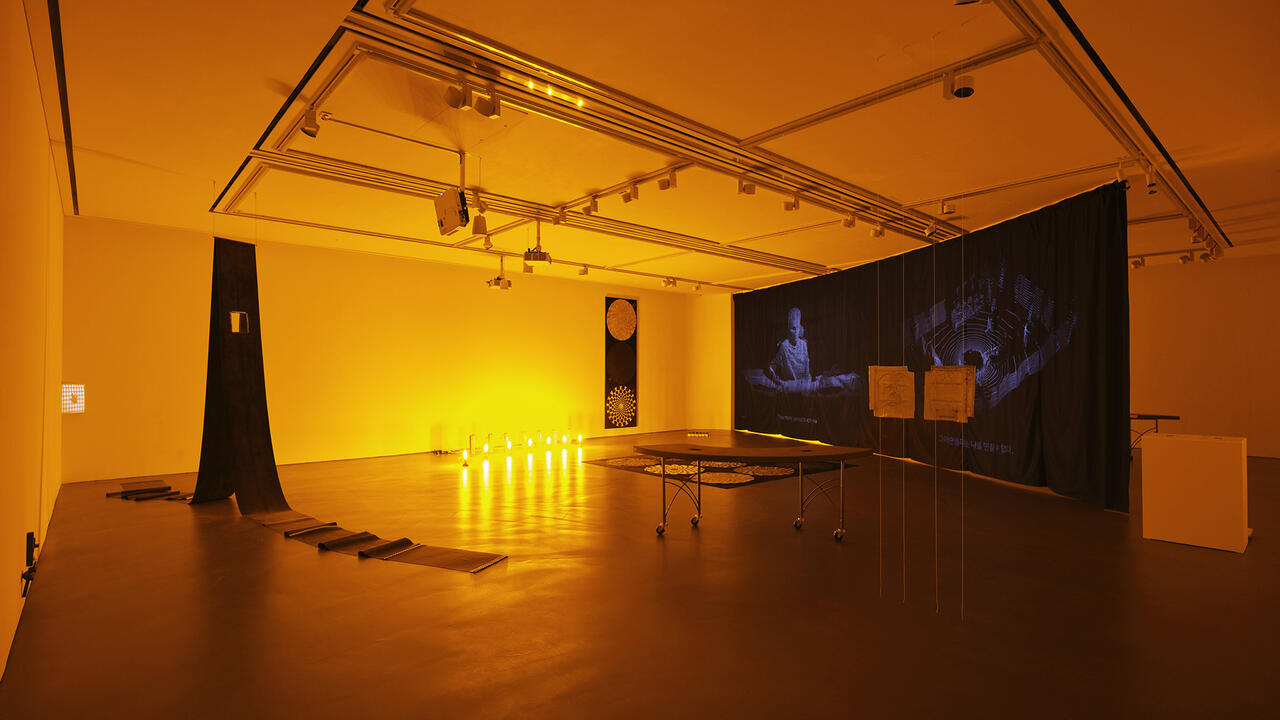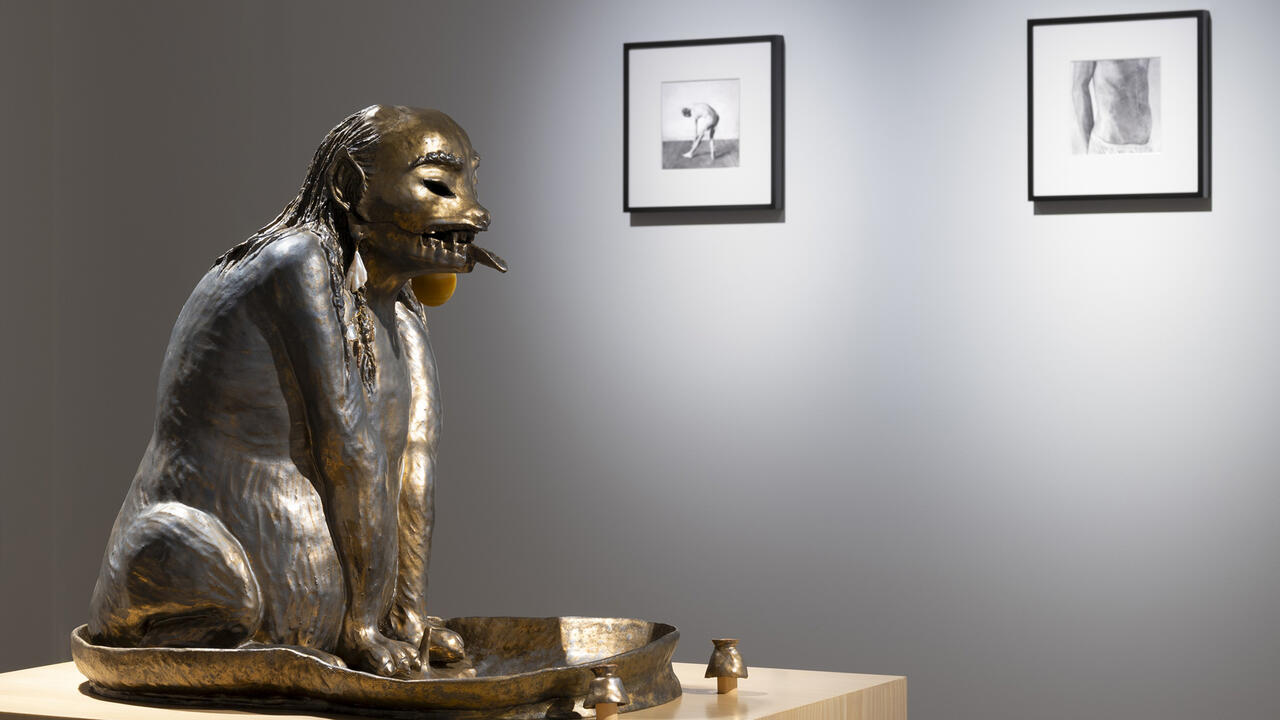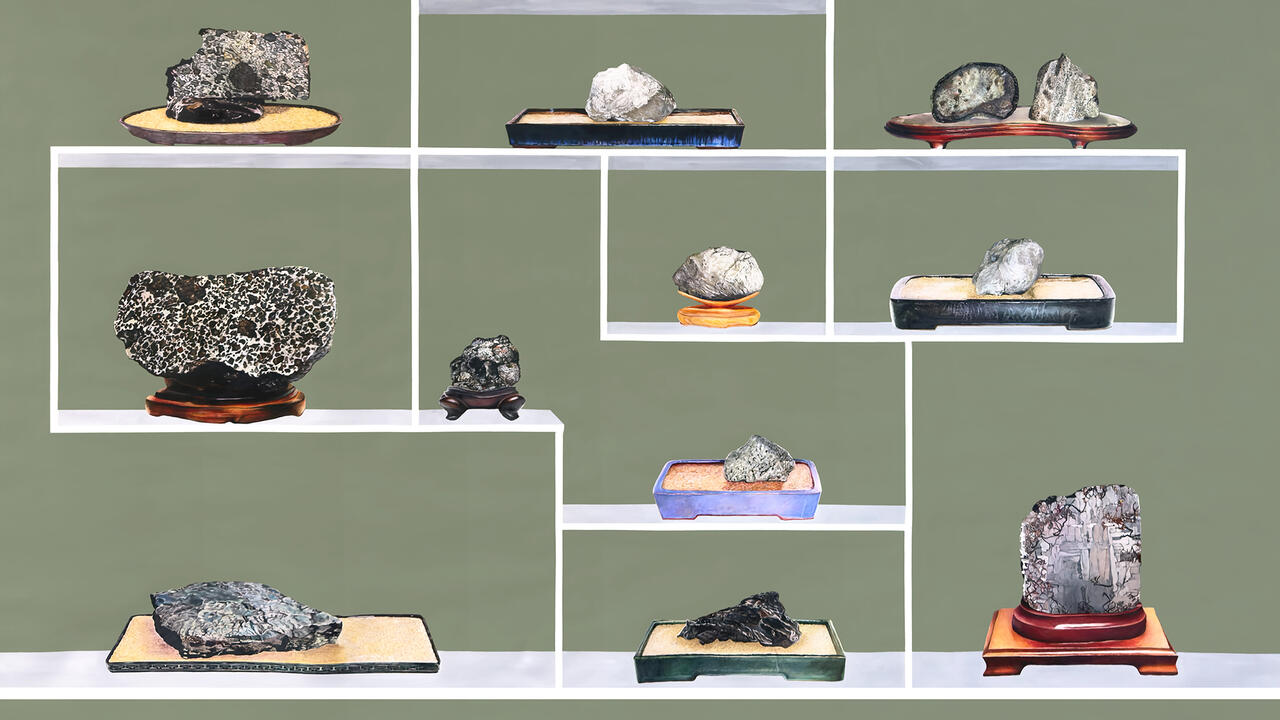Choi Minwha's New Ancient Myths
At Gallery Hyundai, Seoul, the painter combines Korean folk, Chinese Buddhist and Western Renaissance iconography to complicate the idea of national cultural heritage
At Gallery Hyundai, Seoul, the painter combines Korean folk, Chinese Buddhist and Western Renaissance iconography to complicate the idea of national cultural heritage

In the current climate, contemporary depictions of ancient historical subject matter – especially unironic interpretations of mythological and religious themes – seem an unlikely genre to spark engaged discourse. Yet, Choi Minhwa’s latest show at Gallery Hyundai, ‘Once Upon a Time’, attempts to do just that, offering viewers an opportunity to reconsider not only the role of history painting as a reflection of cultural heritage, but of historicization itself as a strategy for shaping nationalist sensibilities. In mounting this landmark presentation, Choi secures a position as one of his generation’s most vital and resolute artists.
‘Once Upon a Time’ features some 60 oil paintings and 40 works on paper, which together comprise a series more than two decades in the making. Executed in a distinctive palette of high-tint colour with a near-translucent quality, these works depict characters and scenes drawn from the annals of Korean folk history. Chief among the artist’s sources is a 13th-century collection of epic tales known as the Samguk Yusa, a cornerstone of ancient Korean folklore. In addition to the founding myth of Korea, the text includes accounts of a king born from an egg, feats of magic by eminent Buddhist monks and humans who metamorphose into animals after long battles, as well as songs, prayers and mystical encounters with dragons, spirits and gods.

Realized in an unpretentious figurative style, Choi’s works are earnest, if at times overcrowded. Thankfully, his approach refrains from didacticism and instead explores an integrative methodology by combining figures from the Samguk Yusa with motifs drawn from an array of visual references. Works such as Haemosu’s Battle (2020) juxtapose imagery from mural paintings of the Goguryo Dynasty (37 BCE–668 CE) and folk paintings from the Joseon Dynasty (1392–1897 CE), as well as compositional schematics from classical Chinese Buddhist paintings and even Italian Renaissance frescoes. Choi takes significant artistic liberties in Hwanung, Son of Heaven, Descending to the City of God (2018), rendering the protagonist as a Christ-like figure amongst a decidedly Eastern milieu of imagery, including no fewer than four dragons. The result is a singularly syncretic iconography.
At its essence, cultural heritage is produced through active exchange and experience, rather than the preservation of a static lineage – even in a part of the world long considered a so-called hermit kingdom. Choi’s paintings serve as a reminder that there is no single perspective or absolute value that encapsulates cultural identity, a view that stands in opposition to the lingering influence of colonial discourse in Korea that sought to rationalize the superiority of Western modernized society. Choi has long sought to counter dominant narratives and ‘official’ histories in his work; coming of age in the late 1970s during the height of President Park Chung-hee’s authoritarian regime, Choi aligned himself with Korea’s burgeoning anti-establishment art movement, known as minjung misul (people’s art). In the decades since, he has engaged with notions of contemporaneity and historicity through diverse bodies of work, while maintaining a critical distance from the rigorous political awareness that continues to characterize the art of his contemporaries.

Although the subject matter depicted in ‘Once Upon a Time’ is largely divorced from empirical systems of knowledge, its basis in indigenous folklore invests Choi’s paintings with a humane subjectivity that cuts to the core of his practice. Although it is certainly possible to analyze each individual work according to its iconographical context, approaching this exhibition with such an objective lens is to miss the mark entirely. Indeed, it is only by conceding the impossibility of parsing cultural tradition according to any singular framework that the enduring inclusivity of Choi’s historical vision can be fully appreciated.
‘Once Upon a Time’ runs at Gallery Hyundai, Seoul until 11 October 2020.
Main Image: Choi Minhwa, The City of God, 2020, oil on canvas, 97 × 130 cm each. Courtesy: the artist and Gallery Hyundai, Seoul





















